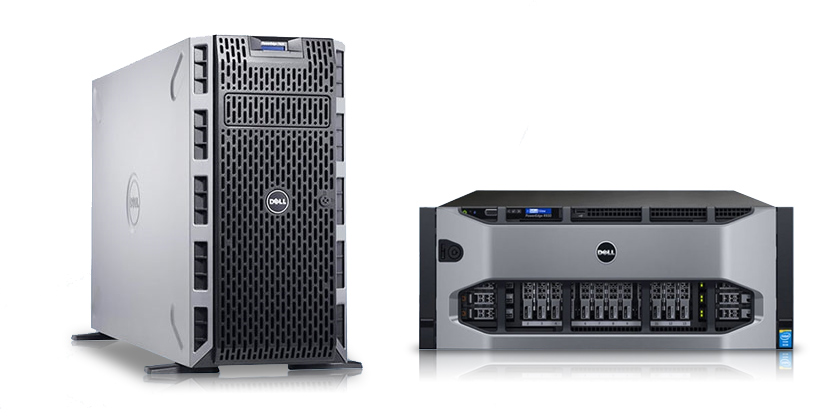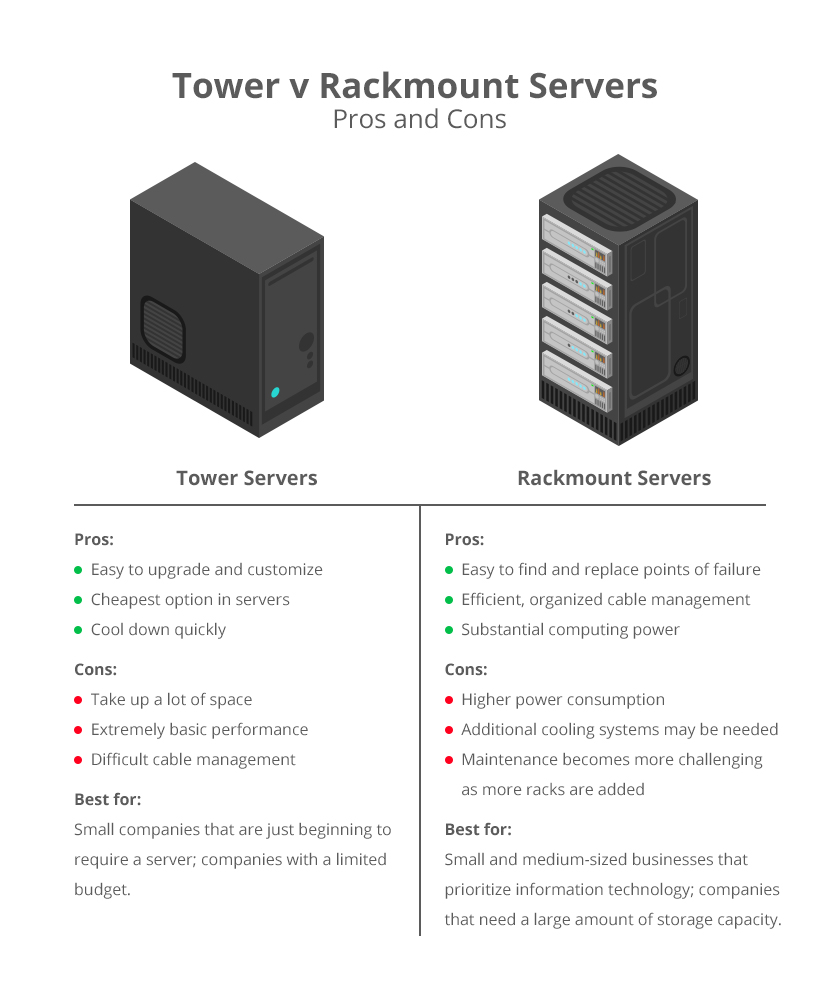Tower v Rackmount Servers: Which One Is Right for You?

Every buying decision you make for your small business is tailored to fit your individual needs, as well as your particular services and work environment. Choosing the right server is no different, which is why there’s no single (or simple) answer to the question of which server is right for you.
Servers provide better processing power, greater memory and more storage than a computer alone, so users benefit from being able to perform multiple tasks and access applications quickly and efficiently. But since their abilities can vary greatly, there are several considerations in deciding what type of server is best for you.
For example, you need to know what kind of load you expect to place on the server, what type of integration is necessary and what kind of storage you’ll require now and going forward. Overall, the biggest factors in your server choice will likely be its computing power and the amount of storage capacity it can offer.
Making sure you have adequate storage often drives the buying process, but there are many other considerations as well. The physical size of the server and
what kind of budget you have both for the purchase itself and for maintenance all will be included in your eventual decision.
Deciding on the
right server means knowing which one will best fit your individual needs. The two most common types of servers are tower servers and rackmount servers, and understanding what each one can (and can’t) do is a good way to help you decide which one is best for your business.

Understanding the Power of Tower Servers
The most basic types of servers are tower servers, which look and operate much like traditional CPUs for desktop computers. They offer basic performance, which is why they are less expensive, although some newcomers to the market are designed to handle more tasks.
The basic nature of these servers and low price point means they are strictly no-frills purchases. They typically will not have pre-installed components like a dedicated fan for cooling, advanced graphic cards or a keyboard, or video use (KVM) kit. For companies looking for a bare-bones server that can be upgraded in the future, a tower server provides a good solution.
However, if you have multiple network devices that need to connect to the servers, this might not be the best plan. You will end up having to contend with a lot of cable management, and such cabling can be an office headache.
One more consideration when buying a tower server is the amount of space you have available. Their bulky form-factor makes them a greater challenge to manage because of the physical space they require. It’s difficult to move them from one place to the next or stack them on top of one another. While they can be used in a variety of work areas and don’t need a designated data room, tower servers must have space both for the servers themselves and the cabling they require.
Stacking the Benefits of Rackmount Servers
Rackmount or rack servers are designed to be bolted into a slot known as a bay. The design of the rack features multiple bays that allow several servers to be placed in one rack. This not only saves floor space, but makes it much easier to consolidate your network resources.
With all of the components of your system located in one place, maintaining the system and managing your connections becomes much easier. With this setup, your rackmount server becomes the central hub of your business, bringing together multiple servers that have different applications without requiring a large footprint. A single rack can house different servers that each are dedicated to a specific function, such as email, software and storage. This provides the most flexible configuration and also optimizes the amount of storage available. The rack can store related tools, such as batteries, network peripherals, cooling systems and
SAN devices.
Rackmount servers streamline cable management, since the components are located together, and they are easily expandable. This includes being able to add processors, RAM and storage. Identifying and replacing malfunctioning or faulty servers becomes simpler, too, because of the nature of the rack design.
Because of the high density of components, rackmount servers may require additional cooling systems. They will consume more power and require more maintenance, which increases exponentially as racks are added.
Choosing the server that’s right for your business means looking at more than just storage capabilities. Consider what features are needed and whether or not you’re going to require an upgrade in the near future. Keeping in mind your own space limitations and how much you can budget for maintenance can also help you make the decision that’s best for your business.
When you’re ready to buy the server that is right for you, Aventis Systems can help. Contact us today at 1-855-AVENTIS or visit us online at
www.aventissystems.com.
Recommended Reading
|